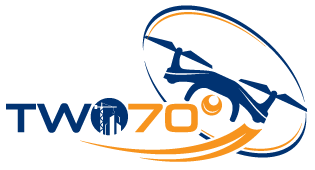Understanding Drone Specifications for Surveying
Choosing the right drone is critical for precise mapping and data collection. When selecting a drone for surveying, consider the following key factors:
- Camera quality – High-resolution cameras improve mapping accuracy.
- RTK/PPK capability – These enhance GPS accuracy for better geospatial data.
- Battery life – Longer flights reduce the need for frequent landings and take-offs.
Best Drone Models for Aerial Surveying
Some of the best drone models for aerial surveying include:
- DJI Phantom 4 RTK – Compact, precise, and widely used for mapping.
- DJI Matrice 300 RTK – Advanced drone with longer flight time and thermal imaging.
- WingtraOne – A fixed-wing drone ideal for large-scale aerial surveys.
Understand Local Drone Regulations
Compliance with Australian UAV Laws
Australia has strict UAV (Unmanned Aerial Vehicle) regulations governed by the Civil Aviation Safety Authority (CASA). Key compliance points include:
- Registering commercial drones with CASA.
- Keeping your drone within the line of sight.
- Avoiding flights near airports or restricted airspace.
How Regulations Impact Drone Surveying
Failing to comply with regulations can lead to fines, loss of certification, and legal consequences. Staying informed about airspace restrictions and acquiring necessary permits ensures smooth operations.
Plan Your Flight Path Effectively
Pre-Flight Surveying Checklist
Before takeoff, conduct a thorough site assessment:
✔ Check for obstacles like power lines, trees, or tall buildings.
✔ Ensure the GPS signal is strong.
✔ Review weather conditions for safe flying.
Using Automated Flight Planning Tools
Software like Pix4D, DroneDeploy, and Propeller Aero allows automated flight path planning, ensuring even coverage and overlap for accurate mapping.
Use High-Quality Drone Mapping Software
Comparing Different Drone Surveying Software
There are multiple software options available for drone mapping:
- Pix4D – AI-powered photogrammetry for 2D and 3D models.
- DroneDeploy – Cloud-based, easy-to-use software with automation.
- Propeller Aero – Excellent for large-scale survey projects.
Features to Look for in Mapping Software
- AI-driven analytics
- Cloud processing
- 3D terrain modeling
- Compatibility with drone hardware
Implement Ground Control Points (GCPs)
What Are Ground Control Points?
GCPs are strategically placed reference points on the ground used to enhance survey accuracy.
Benefits of GCPs in Aerial Surveying
- Provides real-world coordinates for precise mapping.
- Reduces distortions in large survey areas.
- Enhances 3D terrain modeling.
Optimise Flight Altitude and Overlap
How Altitude Affects Drone Mapping Accuracy
Higher altitudes cover more ground but reduce detail. Lower altitudes capture high-resolution data but require more passes.
Best Overlap Settings for High-Resolution Maps
To get the best results, aim for:
- Front overlap: At least 70%
- Side overlap: Around 60%
This ensures seamless stitching of images for accurate 3D models.
Consider Weather Conditions Before Flying
Wind, Rain, and Other Weather Factors
Unfavorable weather conditions can compromise data accuracy. High winds can destabilize drones, while rain can damage electronic components.
Best Times to Conduct Aerial Surveys
Fly during early mornings or late afternoons for optimal lighting and stable weather conditions.
Ensure Proper Calibration of Sensors
How to Calibrate Your Drone for Surveying
Calibration is essential for accurate geospatial data collection. Key areas to calibrate include:
- IMU (Inertial Measurement Unit)
- GPS system
- Camera and gimbal alignment
Common Calibration Mistakes to Avoid
- Skipping pre-flight calibration checks.
- Ignoring software updates.
- Flying in environments with weak GPS signals.
Process Data Efficiently with Advanced Software
Choosing the Right Data Processing Workflow
Efficient data processing ensures high-quality maps and models. Recommended software includes:
- Agisoft Metashape – For high-resolution 3D modeling.
- Pix4D Mapper – AI-powered photogrammetry tools.
- ESRI Drone2Map – Ideal for GIS professionals.
Reducing Errors in Drone Mapping Data
- Use automated GPS correction tools for better accuracy.
- Validate GCP locations to ensure correct data integration.
- Avoid flight overlaps that are too low, which can lead to gaps in data.
Regular Maintenance and Battery Management
Drone Maintenance Checklist
✔ Clean camera lenses and propellers after every flight.
✔ Regularly update firmware.
✔ Inspect motors and arms for damage.
Best Practices for Extending Battery Life
- Avoid overcharging or deep discharging batteries.
- Store batteries at a 40-60% charge when not in use.
- Keep batteries in a cool, dry environment.
FAQ
How accurate is drone surveying?
With RTK/PPK drones and properly placed GCPs, drone surveys can achieve sub-centimetre accuracy.
What software is best for drone mapping?
Top choices include Pix4D, DroneDeploy, and Propeller Aero.
How do weather conditions affect drone surveys?
Strong winds and rain reduce stability, affecting data accuracy.
What is the best altitude for drone surveying?
For high-resolution mapping, fly between 50-120 metres, depending on project needs.
Do I need a license to conduct drone surveys in Australia?
Yes, commercial drone operators must be licensed under CASA regulations.
Why Choose Two70 for Drone Surveying?
At Two70, we combine cutting-edge drone technology with expert surveying techniques to deliver highly accurate, efficient, and reliable aerial mapping solutions. Our team leverages industry-leading equipment, precise flight planning, and advanced data processing to provide actionable insights for your projects. Whether you need land surveys, construction site monitoring, or environmental assessments, Two70 ensures precision and efficiency in every survey.
Contact us today to discuss how our drone surveying services can support your needs!
Call to Action (CTA)
Need professional drone surveying services? Two70 specialises in cutting-edge aerial surveying solutions. Contact us today for expert assistance!

